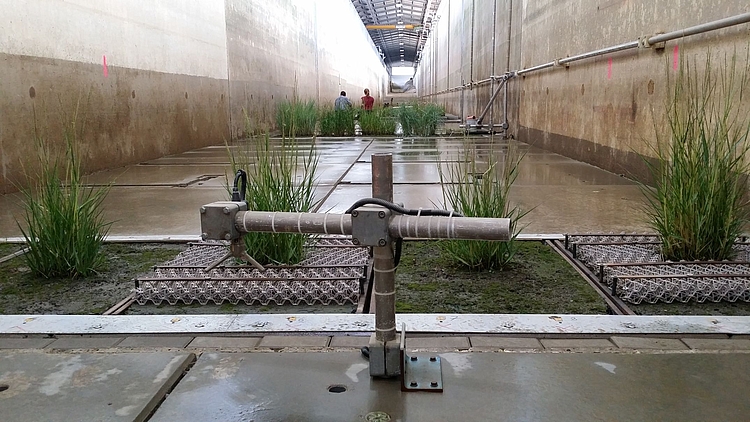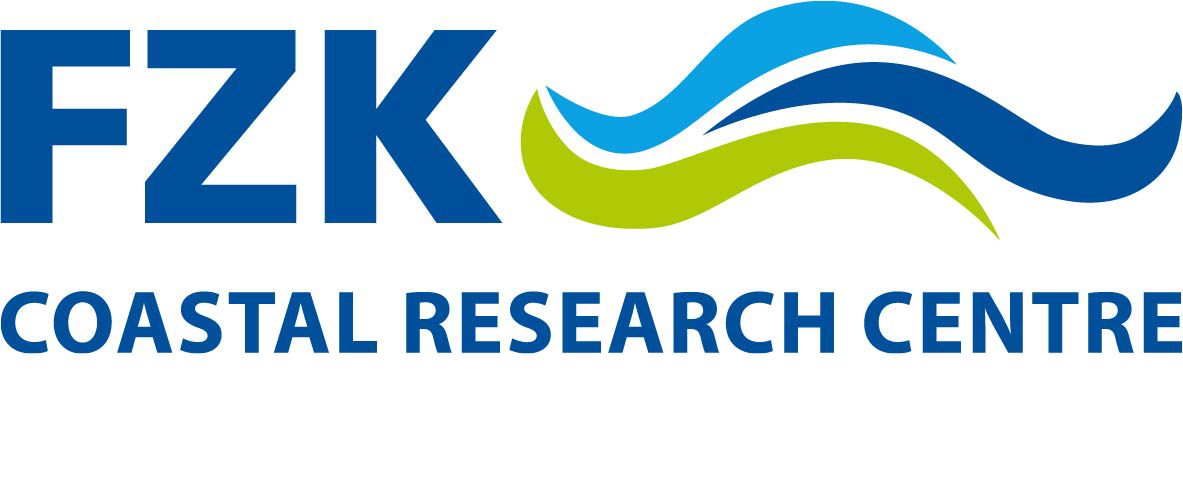Response of ecologically-mediated shallow intertidal Shore Transitions to extreme hydrodynamic Forcing
 © Forschungszentrum Küste
© Forschungszentrum Küste
| Led by: | Dr. Iris Möller |
| Year: | 2018 |
| Funding: | HYDRALAB+ - Transnational Access |
| Duration: | 02.07.2018 - 14.09.2018 |
Scientific Background
Salt marshes are increasingly valued for their role in coastal defence, as they reduce the impact of waves and erosion on shorelines and engineered coastal defences behind salt marshes1,2,3,4. Yet the response of salt marsh margins to extreme hydrodynamic forcing is complex and currently not well understood. The response of salt marsh and adjacent tidal flat sediments to wave forcing is considerably more complex than that of sandy shores5,6, largely due to (a) the large silt/clay fractions present and thus the cohesive nature of the sediment involved and (b) the presence of (partially mobile) biological ‘structures’ (plants and other organisms) within and on the surface. Little is known about the types of hydrodynamic conditions that lead to erosion of these coastal features and of the damage salt marsh plants sustain under wave forcing. However, until we have such knowledge, it will not be possible to predict the way in which the future morphology of these systems, and thus the degree of natural coastal protection that they will provide, will alter with sea level rise and climate change. These issues are particularly critical in the early stages of marsh establishment and growth.
Objectives of the experiments
This project thus aims to quantify:
- how extreme wave-forcing affects seedling survival of different pioneer species
- how (and to what extent) vegetation typically present in the salt marsh pioneer zone affects erosion processes and rates under extreme forcing
- how small clifflets at the seaward margin of dense salt marsh canopies respond to high energy wave conditions
- what damage is caused by drag forces in terms of marsh plant breakage under extreme conditions; and
- how novel artificial erosion protection / stabilisation methods may be used to protect seedlings as a restoration measure (see 1) and reduce clifflet erosion as a conservation measure (see 3)
Model setup and measurements
To achieve the above aims, five separate ‘experimental treatment zones’ are installed, all planted with different species (Scirpus spp, Spartina spp, Puccinellia spp, Elymus spp) of which some also include deployment of artificial erosion protection materials. All treatment zones will be exposed to a range of hydrodynamic conditions.
Pre-and post-test measurements on the horizontal test platform zones were are carried out on the five zones, each extending 4m across the flume and with a width of 1.2m exposed to waves. Measurements are conducted in teams each afternoon during the experimental period, after wave runs and draining to allow access to the experimental platform with the vegetation/soil treatment zones. Each measurement team (of between 2-4 persons) is responsible for either (a) vegetation morphometric measurements (e.g. stem densities, plant canopy densities, plant height measurements), (b) direct point-based soil surface measurements (using the Sedimentation Erosion Table purpose designed for the project), or (c) structure-from-motion photography for each experimental zone (with between 200 and 300 photographs each taken from different angles and heights). More than 10,000 SET pin readings, 420 plant flexibility readings and biomass photos were taken. Crane-mounted, vertical top-down laser scans (GWK Faro scanner) were completed for each individual platform with fixed reference markers present in each scan.
The wave conditions are measured with 4 gauge arrays, consisting of 3 or 4 wave gauges. In order to obtain the relevant input load on the treatment zones, 5 ADV’s are installed in front of each zone. In front of the first zone 4 force transducers are installed to obtain the drag force on selected plant individuals. Behind zone 4 three innovative sensors, called ‘hydromast’, for measuring the flow conditions are fixed.
